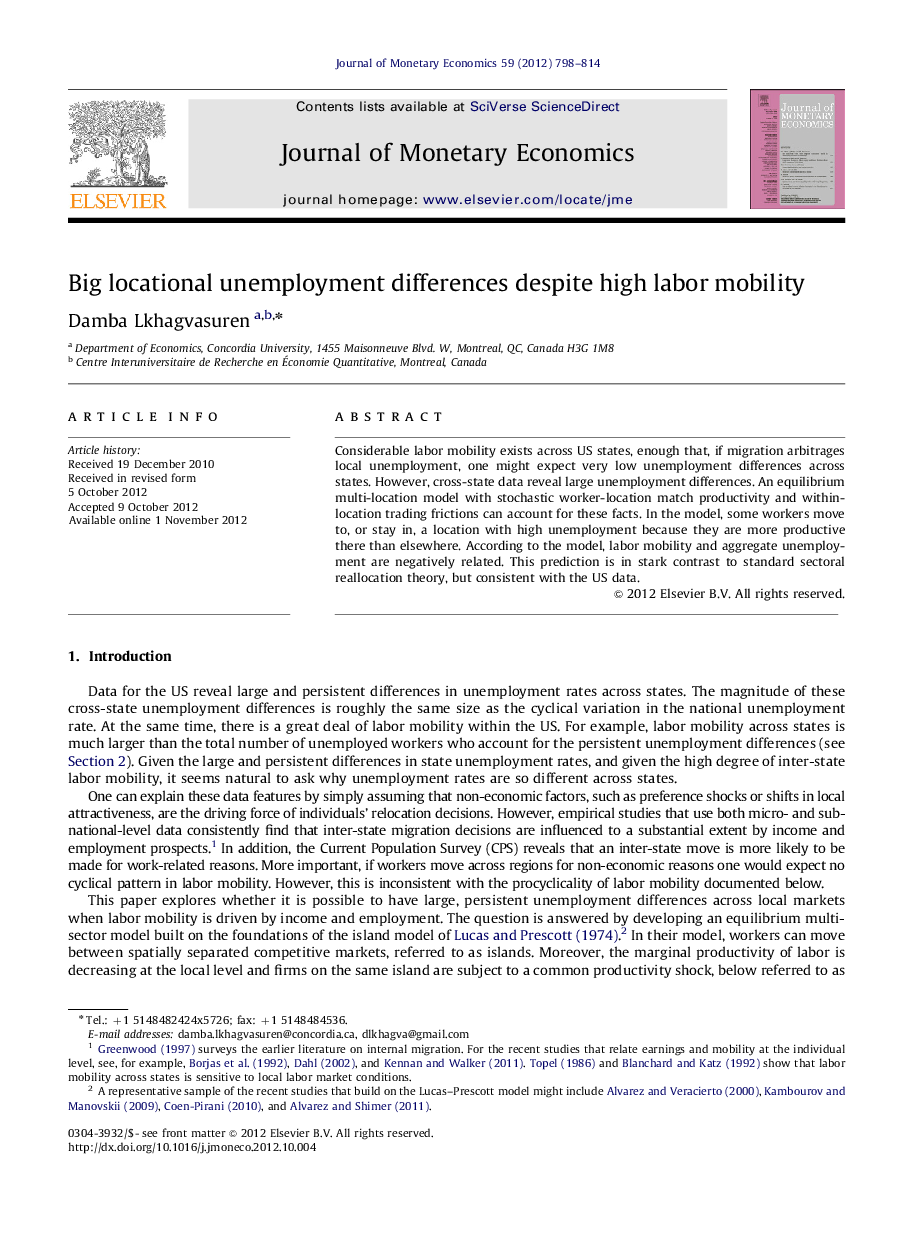| Article ID | Journal | Published Year | Pages | File Type |
|---|---|---|---|---|
| 967176 | Journal of Monetary Economics | 2012 | 17 Pages |
Considerable labor mobility exists across US states, enough that, if migration arbitrages local unemployment, one might expect very low unemployment differences across states. However, cross-state data reveal large unemployment differences. An equilibrium multi-location model with stochastic worker-location match productivity and within-location trading frictions can account for these facts. In the model, some workers move to, or stay in, a location with high unemployment because they are more productive there than elsewhere. According to the model, labor mobility and aggregate unemployment are negatively related. This prediction is in stark contrast to standard sectoral reallocation theory, but consistent with the US data.
► Regional unemployment across the US is large. ► Geographic mobility is much higher than regional unemployment. ► Geographic labor mobility is procyclical. ► Idiosyncratic productivity and matching frictions explain local unemployment. ► Unemployment and mobility are negatively related in equilibrium.
